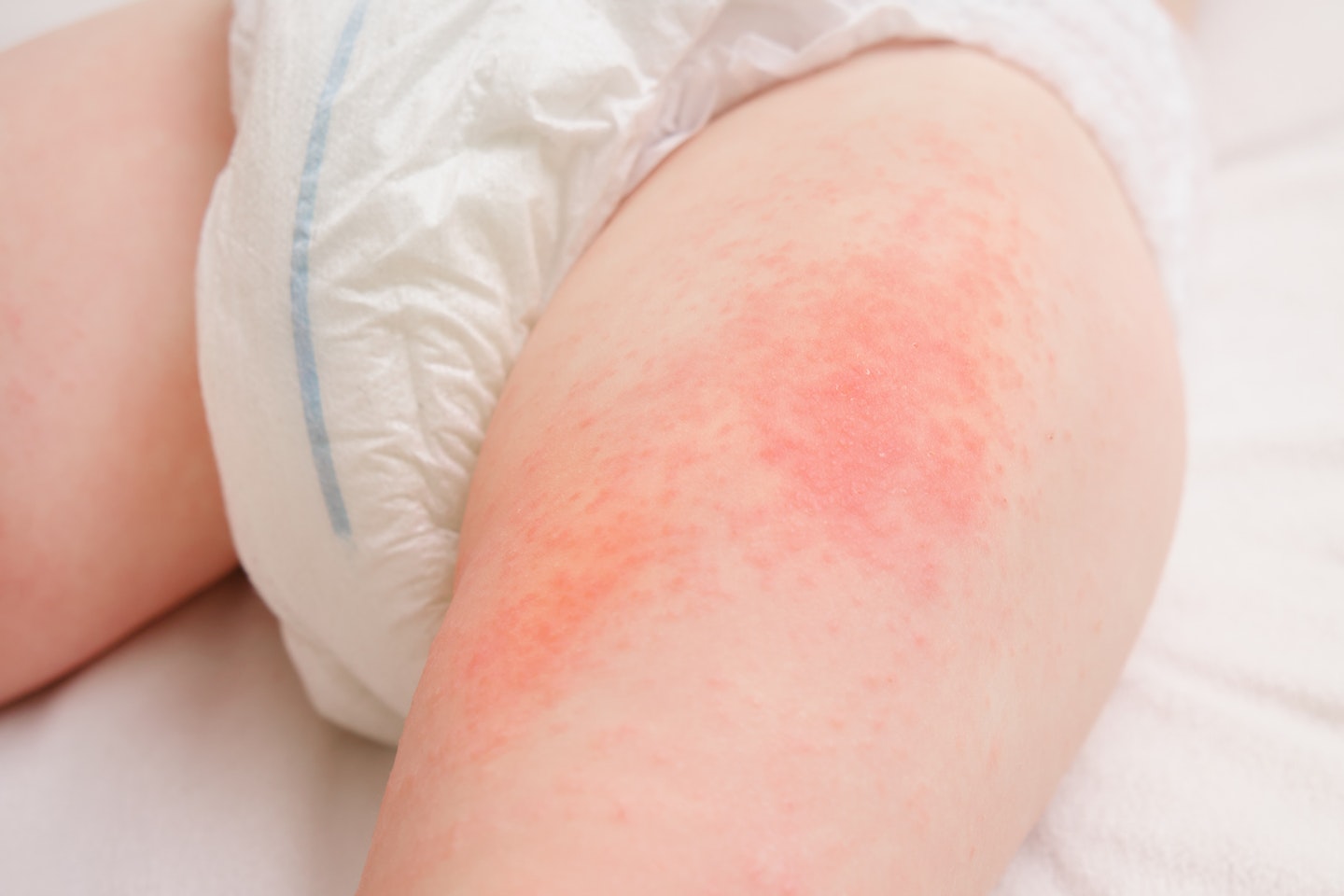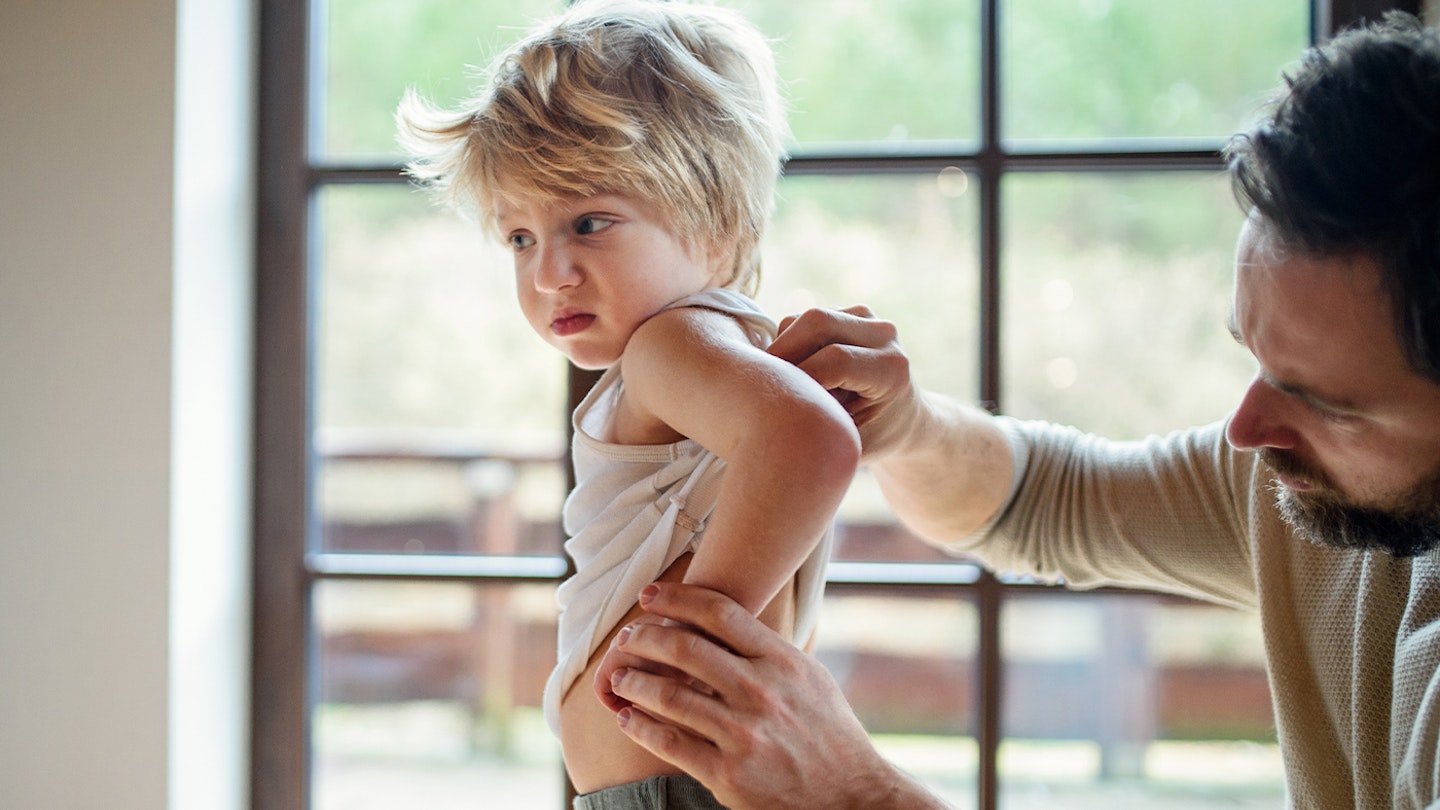Rashes in children can develop for all sorts of reasons. Whether it's a case of teething rash, or it's from an allergy there are many causes for rashes in babies, after all your baby has gone from a sterile environment to being introduced to many new environmental factors, they're bound to react in some way.
As baby rashes are fairly common, it can be hard to know the root cause and how to treat them, so as a parent, it's important you know what you're looking for so you can make the best decision for your child.
And, while rashes on children can occur for various reasons, understanding the cause can help determine the appropriate action.
According to the NHS: "Many things can cause a rash in babies and children, and they're often nothing to worry about." But, they do advise that you call 999 or go to A&E if your child is unwell and you notice any of these symptoms:
• a stiff neck
• bothered by light
• seems confused
• a high temperature
• difficulty breathing (you may notice grunting noises or their tummy sucking under their ribs), breathlessness, or they're breathing very fast
• a rash that looks like small bruises or bleeding under the skin and does not fade when you press a glass against it
• their skin, lips or tongue look pale, blue, grey or blotchy
"On brown and black skin, it may be easier to see the rash or colour changes on the soles of the feet, palms, lips, tongue and inside the eyelids.", the NHS say.
The NHS have also stated that:
-
Rash with a high temperature - A rash on 1 or both cheeks plus a high temperature, runny nose, sore throat and headache may be slapped cheek syndrome, and can be treated at home.
-
Blisters on hands and feet plus mouth ulcers - Blisters on the hands and feet, with ulcers in the mouth, could be hand, foot and mouth disease.
-
Rash on the face and body - A rash of small, raised bumps that feels rough, like sandpaper, could be scarlet fever.
-
Rash with itching - A rash of small, raised spots that feels itchy or prickly could be heat rash (prickly heat).
-
Scaly or cracked skin - Skin that's itchy, dry and cracked may be atopic eczema. It's common behind the knees, elbows and neck, but it can appear anywhere.
-
Raised, itchy spots or patches - Raised, itchy patches or spots could be caused by an allergic reaction (hives).
-
Itchy round rash - An itchy, dry, ring-shaped patch of skin may be ringworm. The patch may look red, pink, silver, or darker than surrounding skin.
-
Itchy sores or blisters - Sores or blisters that burst and leave crusty, golden-brown patches could be impetigo. The sores or blisters can be itchy, get bigger or spread to other parts of the body.
-
Sores or blisters that burst and leave crusty, golden-brown patches could be impetigo -The sores or blisters can be itchy, get bigger or spread to other parts of the body - Very itchy raised spots could be caused by tiny mites that burrow into the skin (scabies). There may be raised lines with a dot at one end, often first appearing between the fingers.

What's causing the rash?
While some rashes, like nappy rashes or stings might have an obvious cause, others aren't as obvious. The first thing you should do is try and rule out any causes. For example, have you just changed the soap you use on their skin, this could be leading to a common skin condition. Or have you just introduced them to a new pet? Any changes such as this could be causing them to have an allergic reaction, so try and narrow down the cause to see if the symptoms ease.
You should also try and establish what kind of rash it is too while taking some steps to soothe the rash.
Step one: Start by cleaning the skin with a gentle soap. Avoid scrubbing, rinse with warm water and gently pat dry.
Step two: Try to soothe the rash by placing a wet cloth on the affected area.
Step three: If the itching and soreness is making your little one upset, visit your local pharmacists who may be able to give you some cream or medication to help with the rash symptoms.
Step four: Make sure your child's fingernails are cut nice and short, or pop some gloves on them at night so they don't scratch their rash while sleeping.
How can I tell if the rash is serious?
To determine how serious the rash is, you want to test if the rash “blanches,” or goes away with pressure.
Firstly press the side of a clear glass tumbler gently against your child's rash. Now look through the side of the glass. If the rash disappears or turns white it's a blanching rash, which means it usually isn't serious. If the rash doesn't disappear, it could be serious. If this is the case, you should contact your doctor immediately to rule our anything serious.
When to see your doctor
If your child's rash is accompanies by the following, you should seek a doctor's advice.
• Fever
• If it doesn't get better after a few days
• Skin bruising
• Painful urination
• Swelling of the mouth or face
• Breathing difficulties
• Loss of appetite
• Tender lymph nodes
You should also seek medical attention if the rash is across the nose and cheeks, if the rash is in an oval shape, red, swollen, wet, crusty, blistering, or oozy rash, a rash that peels, on the palms or soles of feet or a rash that is worse in the creases of the skin.
Even if your child's rash is nothing to worry about, it's always worth getting a rash checked over by a medical professional just to be on the safe side.
Lorna White is the Senior Digital Writer for Mother&Baby. After running the Yours magazine website, specialising in content about caring for kids and grandchildren, Lorna brought her expertise to Mother&Baby in 2020. She has a keen interest in a range of topics from potty training and nutrition to baby names and early development and has a wide range of experienced medical experts and professionals at her fingertips. In her spare time, she enjoys spending time with her two young sisters, dog walking and enjoying the outdoors with her family.
